Mahabharata: Some of the Essential Facts
The statements in the Bhagavatam and Mahabharata and the Puranas are all different historical incidents. Mahabharata is called, according to Vedic authorities, as the history of India. I do not know who first designated it as an “epic”. That is the cause of the fall down of Hindu culture. They did not believe in their Vedic literatures presented by Vyasadeva…
The facts that I am presenting in this article are nothing new. They have been presented many, many, many, times in the past and when I leave this material body there will be others who will similarly repeat these same points. Repetition is essential for aiding understanding and refreshing the memory, for example Srila Prabhupada was always repeating “We are not these bodies” and when asked why he kept saying the same thing over and over again. He said he was repeating because still his disciples did not yet understand this point.
The teachings of His Divine Grace A. C. Bhaktivedanta Swami Prabhupada and research documents by Prasad Gokhale & K. Sadananda inspired the following compilation.
This Vedic knowledge was stated in the Atharva Veda. Later on, just on the beginning of this millenium, the Kali yuga, Vyasadeva, who is the supreme authority of Vedic knowledge, considering the degraded condition of men in this age, divided the whole Veda into departmental knowledge and some of his disciples were entrusted with a particular type of departmental knowledge. In this way the whole Vedic knowledge developed into four Vedas, 108 Upanisads, 18 Puranas, then summarized in Vedanta Sutra, and then again to benefit the less intelligent class of men like women, workers, and the degraded descendants of the higher class he made another fifth Veda known as Mahabharata or the great history of India.
(Letter to: Unknown – Los Angeles 12 April, 1970 – 70-04-12)
As we can see the Mahabharata was written for the predominantly lower class people and declared as the fifth Veda. Such mercy! In this age of Kali the people are mostly of the lower class type, sudras and less. They are so unfortunate that they have neither the time nor the intelligence to understand the Upanishads, Vedas, and Vedanta Sutras etc. This situation is due to their karmic state of bewilderment; neither can they find a bona fide spiritual master to explain this knowledge to them. The great sage Veda Vyaasa at the beginning of the Kali Yuga (the age of quarrel and hypocrisy, that we now live in), being the literary incarnation of the Supreme Personality of Godhead, considered all this. Thus the fifth Veda was written with the crown jewel of all Vedic literature as its centerpiece, the Bhagavad Gita.
One of the common features of the opposition (Christians & Muslims) which devotees meet when engaged in preaching Krishna Consciousness is the misconception that Hinduism (that includes Hare Krishna’s) is merely mythological with no foundation in reality. When asked how do we know, that what the Mahabharata (that includes the Bhagavad Gita) says is true and that it is not some phantasmagoria dreamed up by some greatly imaginative living entity. We can of course reply that our spiritual master has confirmed to us that it is factual and not fictional.
“You have hinted about the value of concentration and in the stories from the Bhagavatam and Mahabharata, but I do not exactly follow what you mean by this. The statements in the Bhagavatam and Mahabharata and the Puranas are all different historical incidents. Mahabharata is called, according to Vedic authorities, as the history of India. I do not know who first designated it as an ‘epic’. That is the cause of the fall down of Hindu culture. They did not believe in their Vedic literatures presented by Vyasadeva. They are not stories after all. Stories are imaginary, but they are not imaginary. They are actual facts. But such historical facts are not chronological; but for the teaching of the commonplace people some of the important incidents of history are there. It is said saram saram samud dhritva. This means only the essential facts have been collected, and they are put together in the shape of Puranas, Mahabharata, etc.”
(Letter to: Mr. Kair -Los Angeles, 8 July, 1969)
The above quote from Srila Prabhupada should be sufficient evidence for members of the Hare Krishna Movement, but unfortunately the majority of living entities do not yet accept the authority of Srila Prabhupada.
To further prove our point it would be wise to continue the process of enlightenment, by supplying evidence from a different more “socially acceptable” source. Yet pursuing the same conclusion, that Mahabharata is a factual account and not fictitious. The following points should be of help in establishing the truth and destroying those fallacious, “fictitious” based arguments.
- It is written in several places in the Mahabharata that it is an “itihas” which exclusively means, “Thus occurred”. The Aryan people to categorize “ancient” and “recent” events specifically coined the words “Puraana” and “Itihas”. Both the words denote history that has occurred at different times.
- It is mentioned in the Mahabharata (Adi parva, Adhyaya 62) that the annals of the Bharata-Dynasty are recorded in the work.
- It has been clearly stated in the Adi parva, Bhishmaparva etc. that this is “itihas”. If the intentions of the writer were to write a poem or a work of fiction, he would have stated it to be a “mahakavya” or “katha”.
- It would be absurd to say that the Mahabharata is not an “itihas” due to its poetic nature. It was a custom in those days to write everything in poetic form.
- Veda Vyasa had decided to write down the “itihas” even before the initiation of the Mahabharata War. Therefore during the course of the War, Vyasa meticulously noted all the possible details. If it were a work of fiction, why would a person like Vyasa want to fill his work with such minute and unnecessary details?
- A number of dynasties with their long lineage of kings have been presented in this work. More than 50 kings from King Barhi to Maharaja Pandu have been recorded. Additional information about the King, his wife, his scions, his relations, etc. have been accounted in great detail. If it were just fiction, only 4-5 kings would have sufficed to build the story on. Why such mind-boggling details?
- The dynasties recorded in the Ramayana and the Mahabharata concur without a difference. Even the relationships between different kings and their dynasties in both the great “epics” match with each other. If both were mere “epics” written by two entirely different people at two different times, would everything match, even as regards the minor details?
- Many events mentioned in the Ramayana and Mahabharata are the same. Eg.: The mother of (latter) King Sagar was poisoned by his step-mother so that her child would be aborted. But the child was born nevertheless, who was therefore named Sagar.
- The cities established by certain kings have been noted in detail.
- All the characters in the “epic” are well portrayed. Every single facet of their character and important events in their life were recorded. Are such detailed accounts important in a “Maha-kavya”?
- The weapons mentioned in the Ramayana and the Mahabharata are somewhat the same. In fact, some weapons in the Ramayana are not mentioned in the latter “epic” Mahabharata. (eg. Soorya’stra, Yamya’stra, Shoolva’stra..etc.) [The mentioned weapons may have disappeared in the era between the two events taking place].
- The Greek historian Megasthenes has stated that Chandragupta Maurya was the 138 King in the lineage of Lord Krishna. This means that Lord Krishna did exist in the bygone era and that Mahabharata did really occur.
- Archaeological excavations have discovered the submerged city of Dwarka. This is the same Dwarka as mentioned in the Mahabharata.
[It has been reckoned that the city of Dwarka became submerged between 2000-3000 B.C.] - The astronomical recordings in the Mahabharata “epic” and other scriptures (Bhagavatam), give the correct positions of the planets and stars during that time. A work of fiction would not use such astrological detail.
The following section submits the astonishing astro-logical evidence regarding the planetary alignments at that time. It is technical, but the only way to present the evidence concisely. Unless the reader is well versed in both astrology and the Mahabharata there may be some difficulty in absorbing these facts. However, best just to take whatever knowledge one can and utilize it as required.
This is based on information found in March 1995 issue of “Saptagiri” published in Telugu by Tirumala Tirupati Devastaanam, authored by Shri Janamaddi Hanumanta Rao and translated by K. Sadananda. This section was based on the research efforts by Professor K. Srinivasa Raghavan. Several famous pundits of Panchanga Shaastra including the Secretary of the All India Panchanga Samskarana Sangha, Pandit Radhashyaam Shaastri from Hariyana, and Vice chancellor of Sourashtra University, Shri D.R. Mankad, etc acclaimed the research.
Mahabharata war started
Based on the astrological information provided by Veda Vyaasa (Position of the stars etc), Mahabharata war was estimated to have started on 3067B.C. on 22nd November.
On the day of the war, Vyaasa has described the astrological positions of the Sun, Moon, Rahu, Saturn, Guru, Mangala and Sukra planets. By looking at the position based on Panchangam, Indian Calendar, and matching with the position of the stars described by Vyaasa and comparing with the Julian calendar, one can arrive at the precise dates for the war. Furthermore all other related incidents that took place before and after the war were described in Mahabharata, and the dates for these can be precisely matched with the Julian calendar, as described bellow.
Last minute effort to make peace
Lord Krishna made a last minute effort to make peace but failed. He left the Upaplaavya city on Kaartiika Shuddha Dvaadasi day in Revati Nakshatra (star) between 7:36 – 8:24 am. He reached Hastinaapura in Bharani Nakshatra, and had discussions with the Kauravaas till Pushyami Nakshatra.
The day Duryodhana rejected the peace proposal was Krishna Pancami. Lord Krishna left Hastinaapura, and had consultations with KarNa before he departed. (He revealed to KarNa that he was the eldest son of Kunti on Uttara Palghuni day). Lord Krishna informed KarNa that Duryodhana must get ready to fight, seven days hence, which would be Amaavaasya day (new-moon day) with JyeshTa Nakshatra. Lord Krishna returned to Upaplaavya city on Chitta Nakshatra. Three days after that on Anuradha Nakshatra Lord Balarama came to Upaplaavya. Next Pushya Nakshtra day Pandavaas left with Lord Krishna to Kurukshetra.
Fifteen days after his return from Upaplaavya city, Lord Balarama left on Punarvasu Nakshatra on a tour of sacred places. (Lord Balarama did not want to participate in the war that involved cousins on both sides). He returned to Kurukshetra after forty-two days in the ShravaNa Nakshatra. The war already started eighteen days back. On the nineteenth day, BahuLa Caturdashi day on ShravaNa Nakshatra, Duryodhana died. It was the fifty-ninth day after Amaavaasya with JyeshTaa Nakshatra.
Lord Krishna returned from Hastinaapura after his unsuccessful peace mission on Uttara Palghuna day. Starting from that day, the seventh day is new-moon day (amaavaasya) with Saturn on Rohini Nakshatra as discussed by Vyaasa. Rahu was approaching the Sun, and the Moon was turning towards Amaavaasya (new-Moon day).
Yadu dynasty destroyed
36 years after the Mahabharata war, the Yadu dynasty was destroyed. Lord Krishna predicted this happening in astrological terms.
“Rahu has compressed Purnima on Chaturdasi day. This happened once before the Mahabharata war and will be happening again soon. This will lead to our destruction”.
By mentioning the forthcoming destruction of the Yadu dynasty Lord Krishna was remembering Gandhari’s curse on the Yadu dynasty.
Strange phenomenon
Astrologically a strange phenomenon occurred during the Mahabharata war.
The lunar cycle (paksha – normally is 15 days) sometimes happens in fourteen days. But during the time of the Mahabharata war- a rare thing happened – the paksha got compressed to 13 days. (May be 13 is an inauspicious number). This aspect has been discussed in the Bhishma parva – 3rd Adhyaaya.
Guru and Shani are in Vaishaaka, Moon and the Sun entered in the same house one after the other making amaavaasya on the Trayodasi day itself. This peculiar condensation of the tithis into thirteen from fifteen is a rare phenomenon. Vyaasa in the Mahabharata discussed this subject and this was inevitably followed by mass destruction due to the war. This incident provided a direct means to establish the precise date of Mahabharata war.
According to Julian calendar this type of planetary collusion occurred definitely in 3076 BC in November. Vyaasa writes:
Caturdashiim panchadashiim
Bhuuta puurvamca shoodhashiim
Imaantu naabhi jaaneham
Amaavaasyaam trayodashiim
Chandra suurya bhougrastou
Ekamevam trayodashiim
AparvaNi grahaNe tou
Prajaa sakshapaishyataH
“I have seen fourteen days a paksha, fifteen day completion or extension to sixteenth day also. This amaavaasya falling on the thirteenth day itself, I have never seen before”
Vyasa says that, Sun and Moon eclipses falling on the same month during the missing tithis is a rare phenomenon, resulting in large-scale disasters to people.
One month before, in Margashira, during Purvaashhaada Nakshatra, the armies of the Pandavaas and Kouravaas assembled on the West and the East sides of the Hiranya River, respectively. The next day was Navaraatri and Durga Puja day. Duryodhana due to his demoniac nature was itching for war. That evening Duryodhana sent a word with Sakuni’s son Ulaka,
“We have finished the prayer to the arms and everybody is ready – why there is further delay in starting the war?”
The next day, Margashira Shudda Ekadashi day, in KRittika Nakshatra, the war started. Hence, the famous Bhagavad Gita teaching also started on that day. The war began at 6:30 am. The date according to Julian calendar was 22nd November, 3067B.C.
Other notable incidences that occurred:
Bhishma’s death:
Maagha Shuddha AshTami day in Rohini Nakshtra in the afternoon that 58th day after the war started, Bhishma died. (This is the actual death – He actually fell in the war on the 10th day after the war started).
Lord Krishna’s Birth – He was born on 3112 B.C. on Friday at 11:40 PM.
Pandavaas Birth – Yudhisthira was born on August 31, 3114BC, Tuesday (Mangala Vaaram) Shudda Panchami JyeshhTaa Nakshatra – He was 696 days elder to Lord Krishna.
Bhima was 347 days younger to Yudhisthira. – Krishna Trayodashi, Makha Nakshatra, and
Arjuna was 303 days younger to Bhima. Shukla Chaturdashi Soma Vaaram (Monday) Uttara PhalguNi Nakshtra.
When the Pandavaas came to Hastinaapura after the death of their father Pandu, it was 3091BC and Yudhisthira was 14years, 9 months and 11days old.
When he was coronated by Bhishma as a prince, Yudhisthira was 20 years, 1 month and 26 days old. (November, 3094BC).
They reached Varanasi in PalguNa Shuddha AshTami RohiNi Nakshtra.
Draupadi’s Swayamvaram – was in 3091BC, during the month of April – It took the Pandavaas 10 days to reach the house of wax. They then stayed there for a year. After the burning of the wax-house, they spent six months in the Shaalihotraa’s ashram and seven months in Ekachatra city.
The second coronation and building of Indraprasta was in November 3091BC, seven months after the marriage.
Rajasuuya yagna was performed after Arjuna’s dig vijaya tour – It took five years and six months for Arjuna. Subhadra’s marriage was in April 3084BC. Three months after that was Khadava vana dahanam.
Abhimanyu was born in 3083BC, February.
Unlucky 13 revisited
Kaliyuga started in 3105BC, October 13th, Amaavaasya Mangala (Tuesday) JyeshaTa Nakshatra – Kali was born. This was the most inauspicious day.
The next Pournima day (Full-moon day) was full eclipse of the Moon, October 1, 3104BC. That was the day, when the five grahaas along with moon were in DhanishTaa Nakshatra.
Dharmaraja’s Rajasuuya – Fifteen years before the Mahabharata war was the Rajasuuya yagna of Dharmaraja. That day was amaavaasya (new-moon day) JyeshTa Muula nakshtra .
Yudhisthira shakam started in 3082BC, October 26th .
The gambling and the banishment of Pandavaas to forest was in November 3081BC, Margashira shukla-Trayodashi.
Vanavaasam was 12 years and living incognito was for one year (13 lunar years + 5 lunar months + 12 days or 13 solar years plus 18 days) – Bhishma calculated and declared that Duryodhana’s calculations were wrong.
AJNaata vaasam (living incognito) began in Margashira 3069BC. Arjuna was noticed on Margashira Krishna Navami, 3068BC.
The Great War began on 3067BC, Friday 22nd November, Margashira shudda ekadashi Nakshatra.
The war lasted for 18 days.
Dharmaraja ruled for only 36 years.
25 years later Yudhisthira shaka started. (Thursday October 26th).
Fifteen years after Dharmaraja’s rule started, Dhritaraashtra, Gandhaari, Vidura, Kunti and Sanjaya left for Vaanaprasta (forest living). That year itself Vidura performed praayopavesham.
Two years after that Dhrutaraashtra, Gandhaari and Kunti got caught in the forest fire and died.
Sanjaya was remaining
Friday 13th
Lord Krishna ended his lila on 3031BC, April 13th Friday. (Friday 13th is commonly regarded as being a day of inauspiciousness, a day to be extra careful)
Pandavaas Maahaa Prastaanam (retiring to the Himalayas) was in 3031BC, in November.
These are the dates that matched the Indian astrological description of the stars and the moon, and Julian calendar predictions.
There is so much self-consistency in all the events and the descriptions that it leaves one amazed. Based on these exact details Mahabharata must be five thousand years old (from today) as per the historical accounting.
This analysis is extremely precise and scientific, matching the astrological position of the Indian and the Julian Calendars.
The beauty and the scientific psychoanalysis of Bhagavad Gita stand out as a monumental contribution by the devotees of the Mahabharata period to mankind. Based on the above facts the historicity of Mahabharata cannot be questioned.
Another known challenge is to the importance of the Bhagavad Gita, which is just a small portion of the whole Mahabharata. This comes from a certain section of the Hindu community. They claim that the Bhagavad-gita is not so relevant because it is part of the Mahabharata, which is smriti. Their point is that the sruti shastra is of a premier importance, like the Upanishads, and that we should not promote the smriti in preference to the sruti. As we do in the Hare Krishna movement, by our focus on distributing Bhagavad-gita As It Is and other small books, which are but spin offs from the Gita. The following quote from Srila Prabhupada answers this challenge.
Regarding your philosophical question, if the Bhagavad gita is part of Mahabharata which is considered smrti, how can we claim Bhagavad gita to be GITOPANISAD, or one of the Upanisads which are sruti?
Actually because the Gita is spoken by the Supreme Personality of Godhead it is sruti. But people take it as smrti because it is part of the Mahabharata. We take it as sruti as far as we are concerned. The purport of sruti is to make one advanced in understanding the Absolute Truth. Here the Absolute Truth is explaining personally, therefore the Gita should be taken as sruti. But they take it as smrti because it is part of the Smriti (Mahabharata). In one sense it is both sruti and smrti.
(Letter to Acutyananda – 14 June, 1974, 74-06-14)

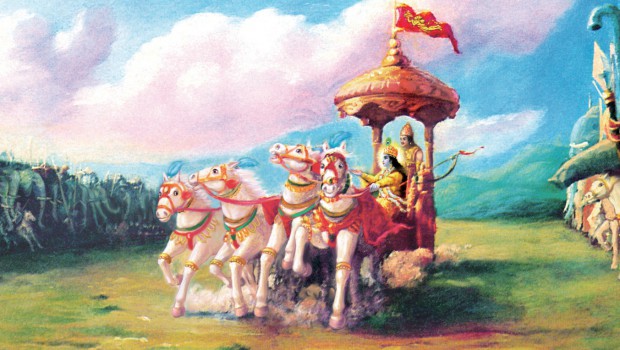
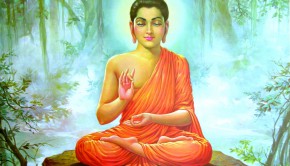
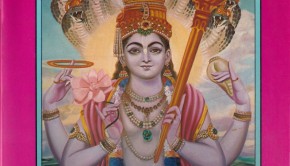
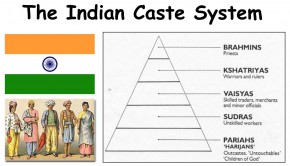
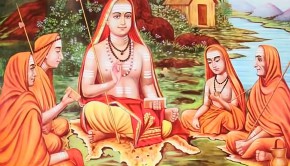








I believe in every word written in mahabharat. Every word spoken by shree krishna. Why were palaces, their entrances so big, because people were extremely tall, around 30 – 50 feet. I don’t feel like proving to western world or anyone what history we had. To hell with them. If you don’t want to believe my history fuck off.
Yes.very tall men existed. Even lately Sikhs who fought Mughals (especially at Chamkaur under Guru Gobind Singh ji) were 8 to 10 feet tall.
If those people were that tall, 10 to 15 feet would definitely would have been possible. However 30 feet is too much.
Hi Raman,
As per my understanding from other related sources, the four yugas i.e., Satya, Treta, Drwapar and Kali follow a simple ratio of 4:3:2:1 respectively. So if Krishna was of around 16 feet in Drwapar Yuga then as per calculation the average height of People around 4 Yugas should be as 32:24:16:8 years respectively.
Thus people of heights around 30 feet is quiet probable.
lord krishna was born to end all of the astra’s (like bramhastram, pashupathaastram). and to start kali yuga. not to kill kaurava. pandavas are enough to kill kauravas.
The astras can’t be ended without ending the people who use them. All of the Gurus who taught the amazing vidya to use such astras to kings were killed in Mahabharat. Kans, Kauravs & Team, Banasur & Team (lol) and then the Yadu dynasty itself was destroyed because they all got adharmic.We are talking of crores of people here and not thousands. The Supreme only descends in human or metaphysical form when the balance is broken. Jai Shri Krishna
As per Bhagvatam (11.6.25) and other sources Lord Krishna lived 125 plus years
and as per your above dates it would be 81years.Which to believe? Also Kaliyuga is believed to start with the end of Krishna and not when he was 7 years old.
I have studied in numerous books that Lord Krishna lived 125 years , Gandhari cursed HIM that after 36 years YADAV Dynasty will be destroyed. This indicates that Lord Krishna was 89 years old at the time of Mahabharata.
hey my parents n sum ppl say at the time of Mahabharata …ppl of height 30 feet (914 cm)use to exist ….wowwwwww thats true or waaat ????
Hare Krishna Prabhu
Yes. People were much taller then. Maybe 30 feet was only a few giants. Perhaps 15 feet, for Krishna and Arjuna and many of the other fighters. I am not completely sure on this so if anyone can provide some proof form the sastras that would be great.
Actually even if you see an strong man who is 7 feet tall he looks quite big. A 30 foot man would be something incredible for sure….
Chant Hare Krishna and be happy!
Madhudvisa dasa
Yes, there were some neandrethals and some humans who were taller than the rest, like 8 to 15 feet, but not sure of 30 feet long beings. However in Treta yug there were huge giants. They say even lord Ram was really tall and well built. You can see in our puranas that in Dwapara yug some Rishis who were meditating for 1000s of years when they withdrew themselves from samadhi and saw the people of Dwapara yug, they said ‘why have people become so small now’. This is because some rishis meditated for an entire yug or in between the end of one cycle to the start of other which gave them surprise of how humans evolved with time. You will find that Lord Shri Krishna told that look at Jambhavan, a man of such knowledge and strength is now afraid to come out as he taken to be a scary creature by the rest of the world. That means in Dwapra yug (Lord Krishna’s age) there were no neandretals and the ones who were not evolved like jambhavan were considered to be an outcast.
didnt know if this is the proper channel to contact anyone about this question, so please excuse me if this is the wrong forum ^_^
about 15 years ago…perhaps longer i received (from iskcon) the single book copy of srimad bhagavatam complete with super tiny words and a small magnifing glass… I loved it ^_^ the entire collection in one…rather large book ^_^ due to moving,i have lost my copy ,and living on a disability check doesnt really allow me to buy the 30 volume set…besides…i really like that one single book! I cant find another anywhere! reading srimad bhagavatam provides the listener with the means of liberation…and Prabupada’s comentary is the greatest ever written! I thought that since I got the book from iskcon, you might be able to tell me where to get another copy? and what kind of price we talking about? disability checks dont exactly give you much to work with ^_^ would you by chance happen to have one laying around that might be damaged and you cant sell it? ill gladly buy it for a discount ! ^_^contact me at gx@neo.rr.com… and HARI KRISHNA!!! ^_^